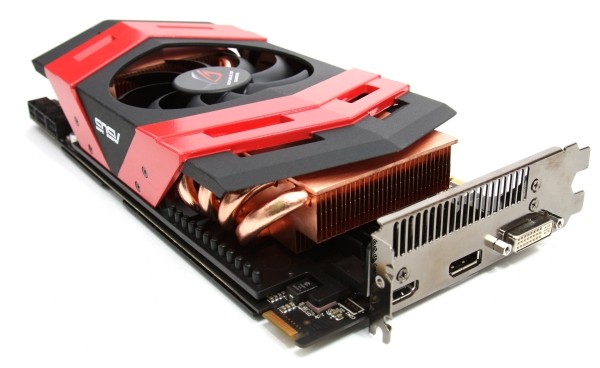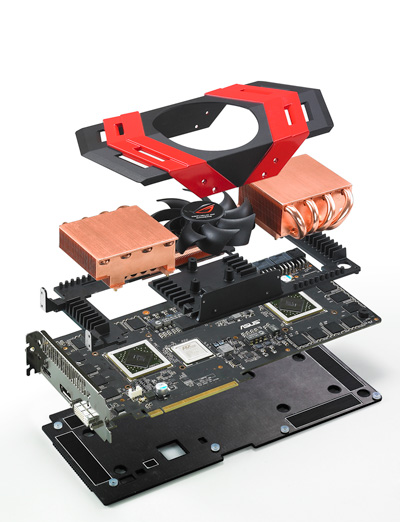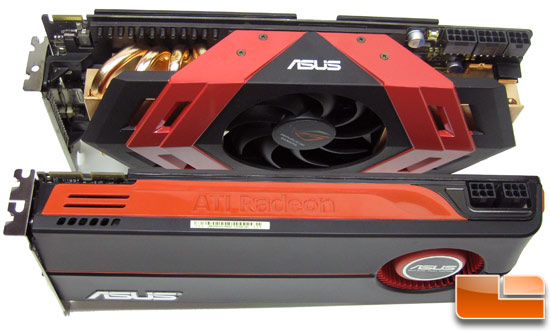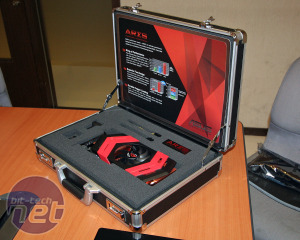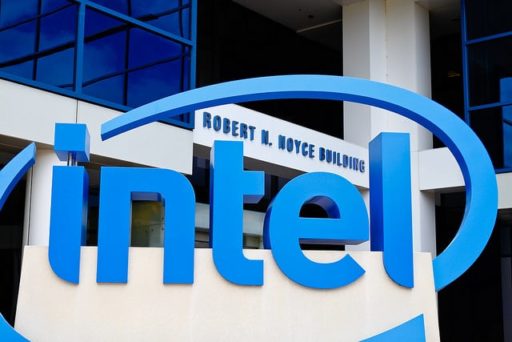Recently we grabbed some time with the Asus technical gurus about their latest cracking bits of hardware – the Ares: a completely revamped Radeon HD 5970 and the Immensity – an LGA1366 X58 motherboard with Lucid Hydra and Radeon graphics card all built into the actual PCB itself……
The ASUS ARES is the fastest, most expensive and heaviest graphics card that we have ever benchmarked here at Legit Reviews. What is there not to like about it? If you have $1200 burning a hole in your pocket this right here is the ultimate video card in the market today. This is one of those products that is reserved for those that want the ultimate video card at no matter what the cost is.
When you name your graphics card after the God of War, you’d better hope it brings some heat, but judging by early reviews, that’s just what ASUS has done. The three slot monstrosity above is the ARES, a $1200 limited edition, fully custom board, sporting twin Radeon HD 5870 GPUs, four gigabytes of GDDR5 memory and practically enough raw copper to smelt a sword. We’re not joking: the thing weighs nearly five pounds and requires a 750 watt power supply with three power connectors (two 8-pin, one 6-pin) to even run. Of course, you’re getting a graphical behemoth for that kind of price, steamrolling every other GPU on the planet — paired with even a 3.8GHz Core i7-930 CPU in 3DMark Vantage (on Extreme settings), Overclock 3D racked up a fairly ludicrous 15,000 score, and the card ripped past 25,000 with a Core i7-980X and a second ARES in CrossFire.
The Ares cards are built using a hefty 12 layer PCB – a comparison to the 10 layers on MSI’s redesigned Lightening was briefly mooted, although it was followed with a swift injection that the Ares is a dual-chip HD 5970 to the MSI’s, arguably simpler, single chip HD 5870.
The card’s core power hardware is somewhat updated, too – although the digital VRMs remain the same as on the HD 5870 (for each core), the extra PCB space affords less signal interference and better grounding. The 8+8+6 PCI-Express sockets play an equally important role in the stable power provision according to Asus. Only the 8+6 are really required for normal operation – the extra 8-pin is for additional performance. 8+8+6 may seem grossly excessive until you think that a normal HD 5870 requires two 6-pin sockets, so CrossFire HD 5870 – which is essentially what the Ares is – requires four cables anyway.
ASUS is making a limited edition run of 1,000 ARES graphics cards and they should be available on the market in 1 to 2 weeks if things go as planned. ASUS says that e-tailers at launch should include Newegg, NCIX, Tiger Direct and Amazon. ASUS has also be working with system integrators and it should be offered within prebuilt systems down the road.
The performance on the ASUS ARES video card was very impressive and to see it significantly faster than the ATI Radeon HD 5970 in every benchmark was great. The ASUS ARES has been in our hands for less than 24 hours, but so far it looks amazing. ASUS is the first company to bring a Petunia card to the retail channel, so we can only hope that more companies bring this card to market. This is the video card that everyone needs to own. Running 70FPS on 3DMark Vantage in Extreme mode and enabling all the eye candy in DX11 game titles at 1920×1200 and higher is made possible thanks to the ASUS ARES
These uber-high-enthusiast targeted products are intended to create a lot of buzz and potentially have a lot of marketing value. But face the factthat there is also a small group of end-users actually really interested it in, regardless of price and deficits. So with this round of realizing something fun, extra ordinary and sure very steep prices, ASUS went back to the drawing board. They came up with a dual-GPU design solution based off the Radeon 5970, but an overall better design, new PCB, higher clock frequencies on GPUs and more memory (2GB per GPU). Then they threw in improved voltage regulation management into the mix and added a new cooler with the weight of a small baby on top of the GPUs to deliver something really special.
he card was less impressive in actual gameplay, merely spanking the (much cheaper) Radeon 5970 and GeForce GTX 480 by a modest amount, and several reviewers complained it was fairly loud… but as the old adage goes, nobody needs a Ferrari to drive the speed limit, but we’ll all drool over them anyhow. Bring on the liquid nitrogen, folks.
Resources :bit-tech.net,engadget.com,legitreviews.com

